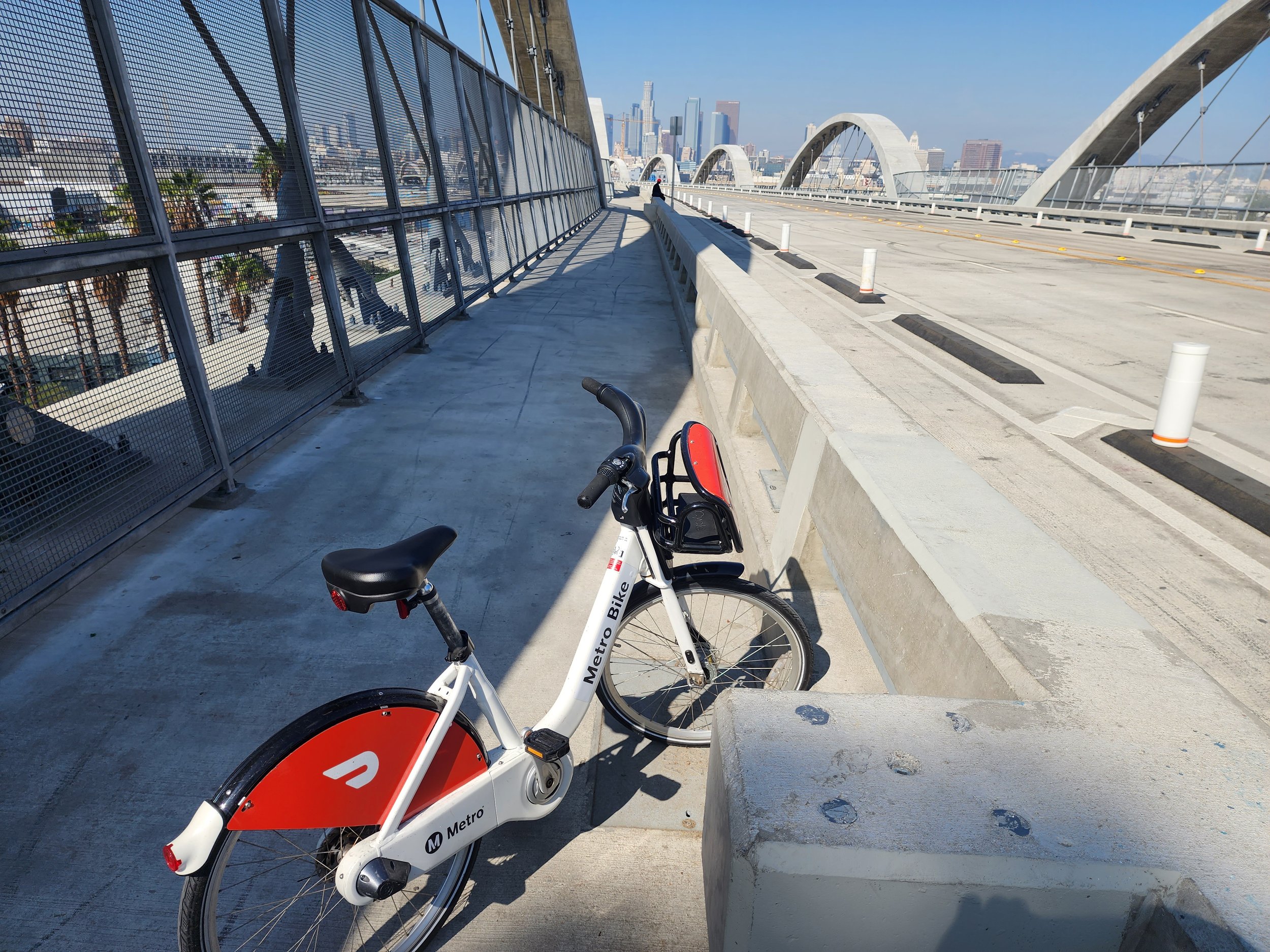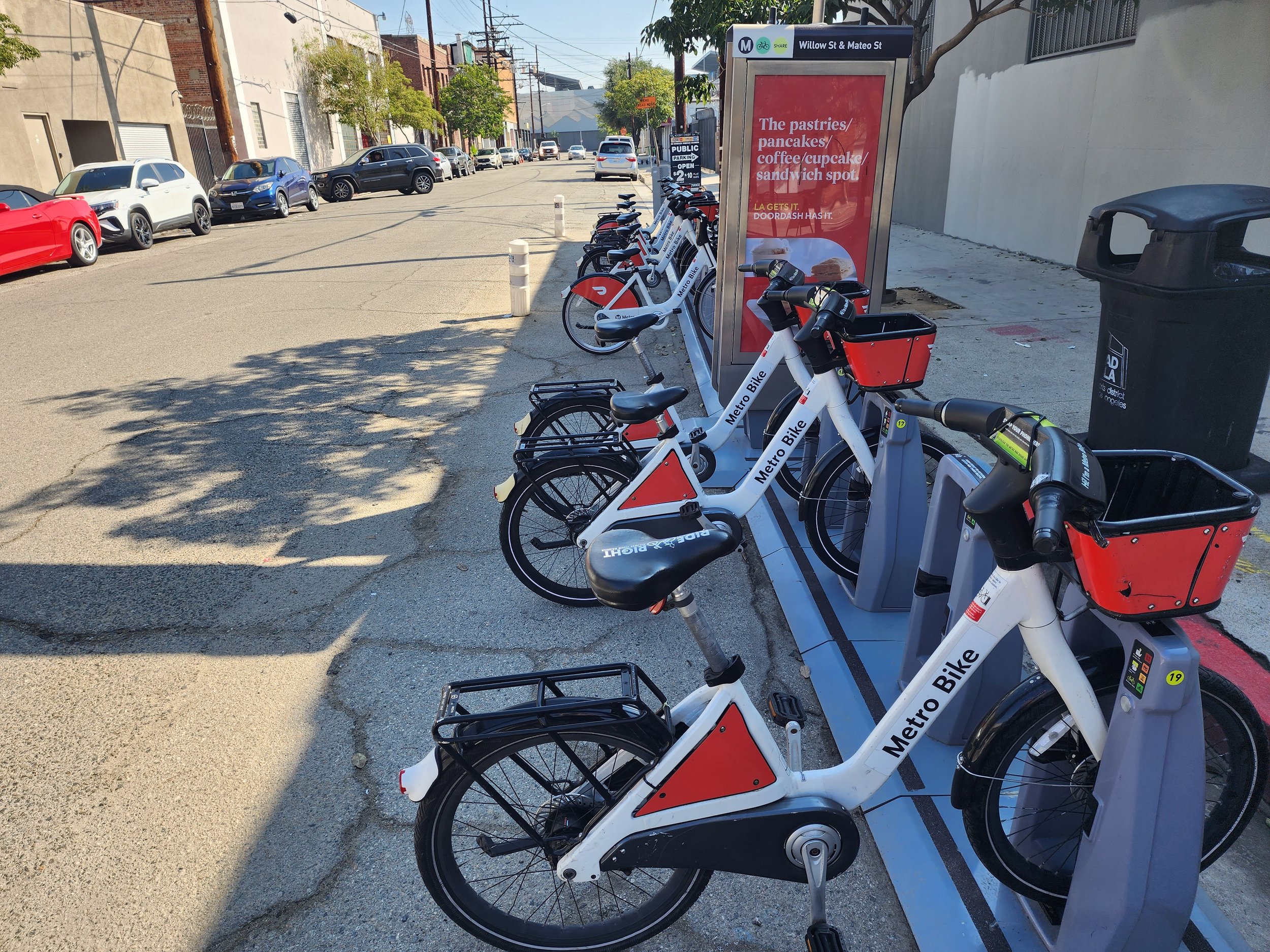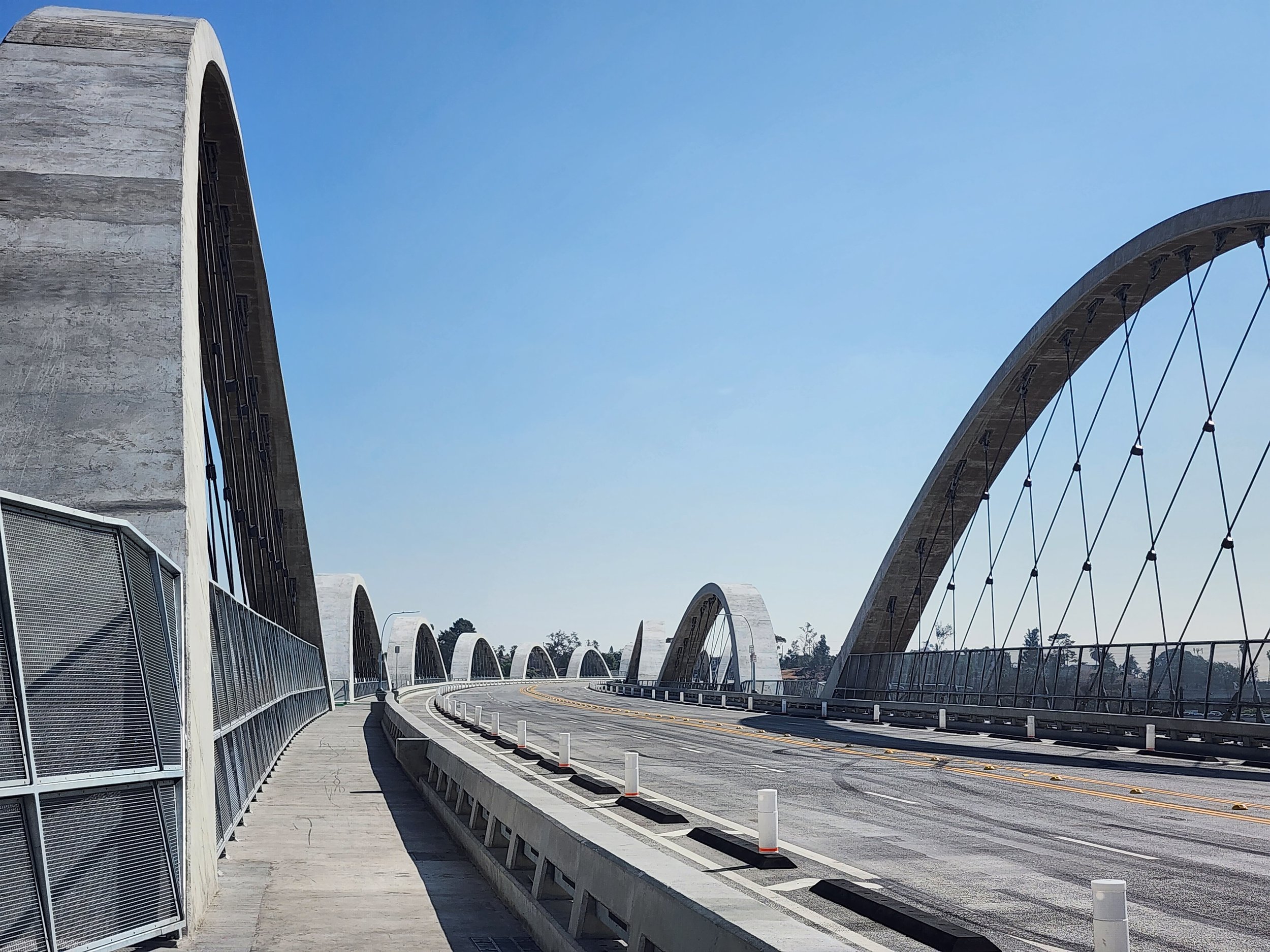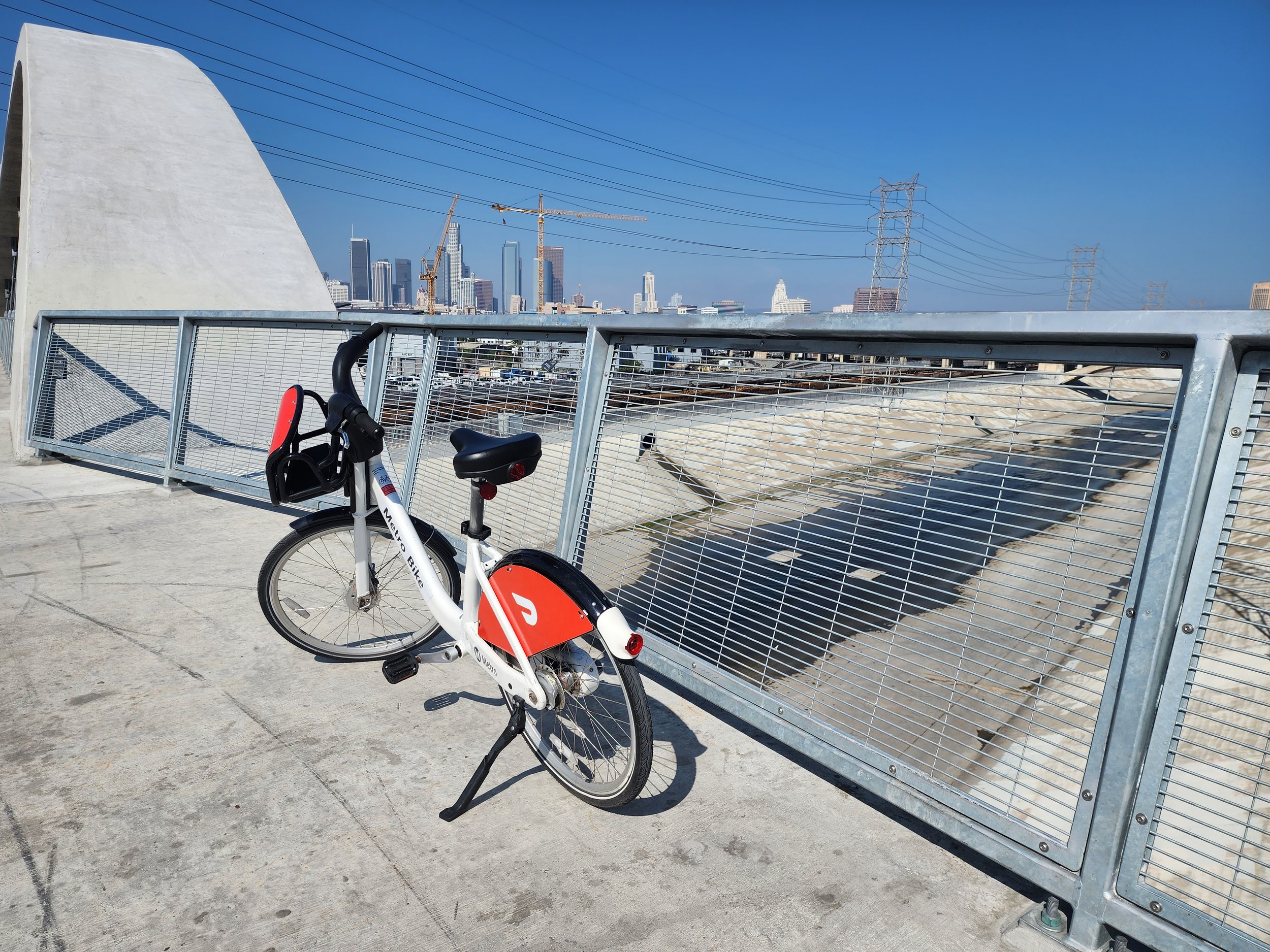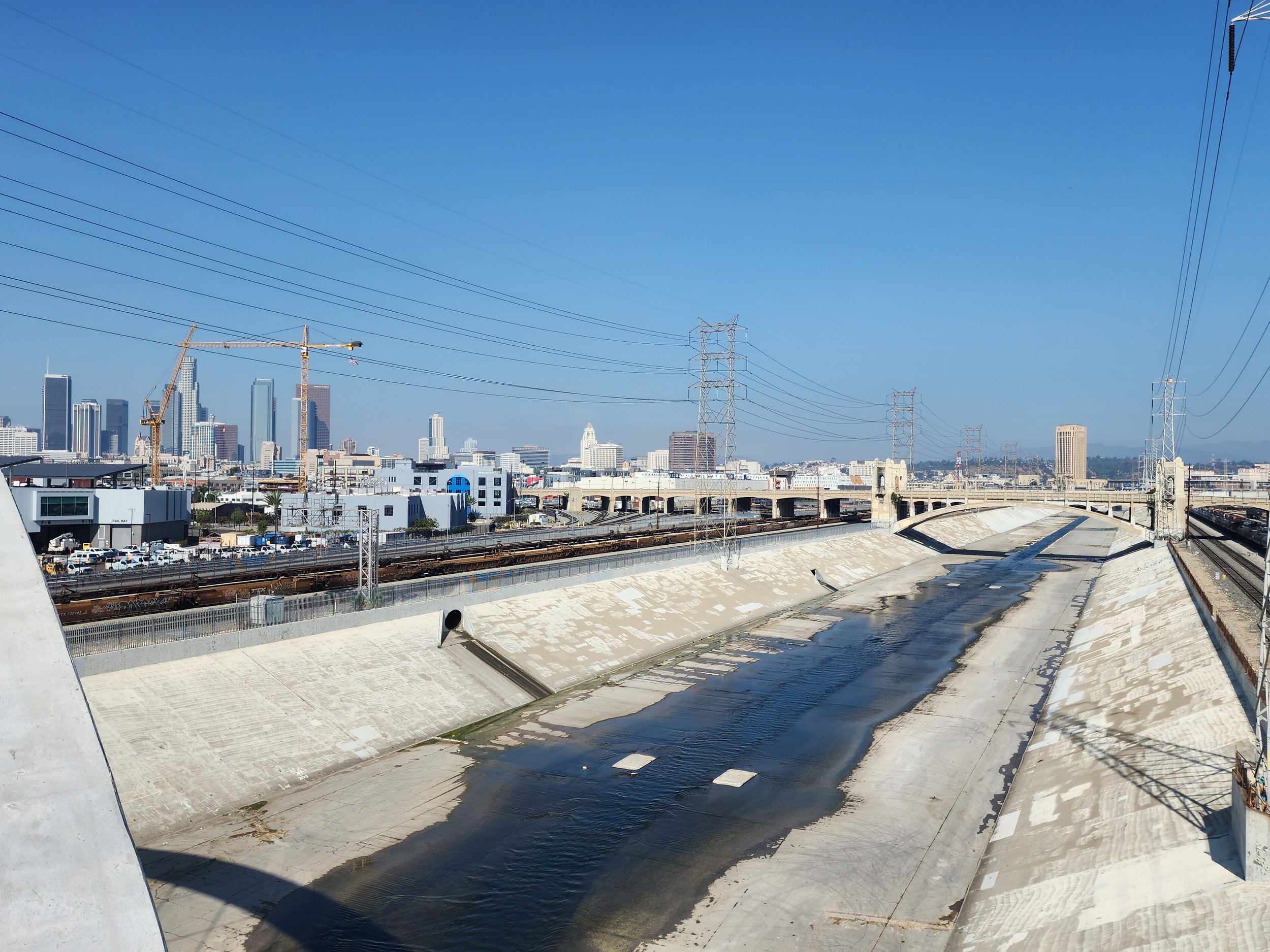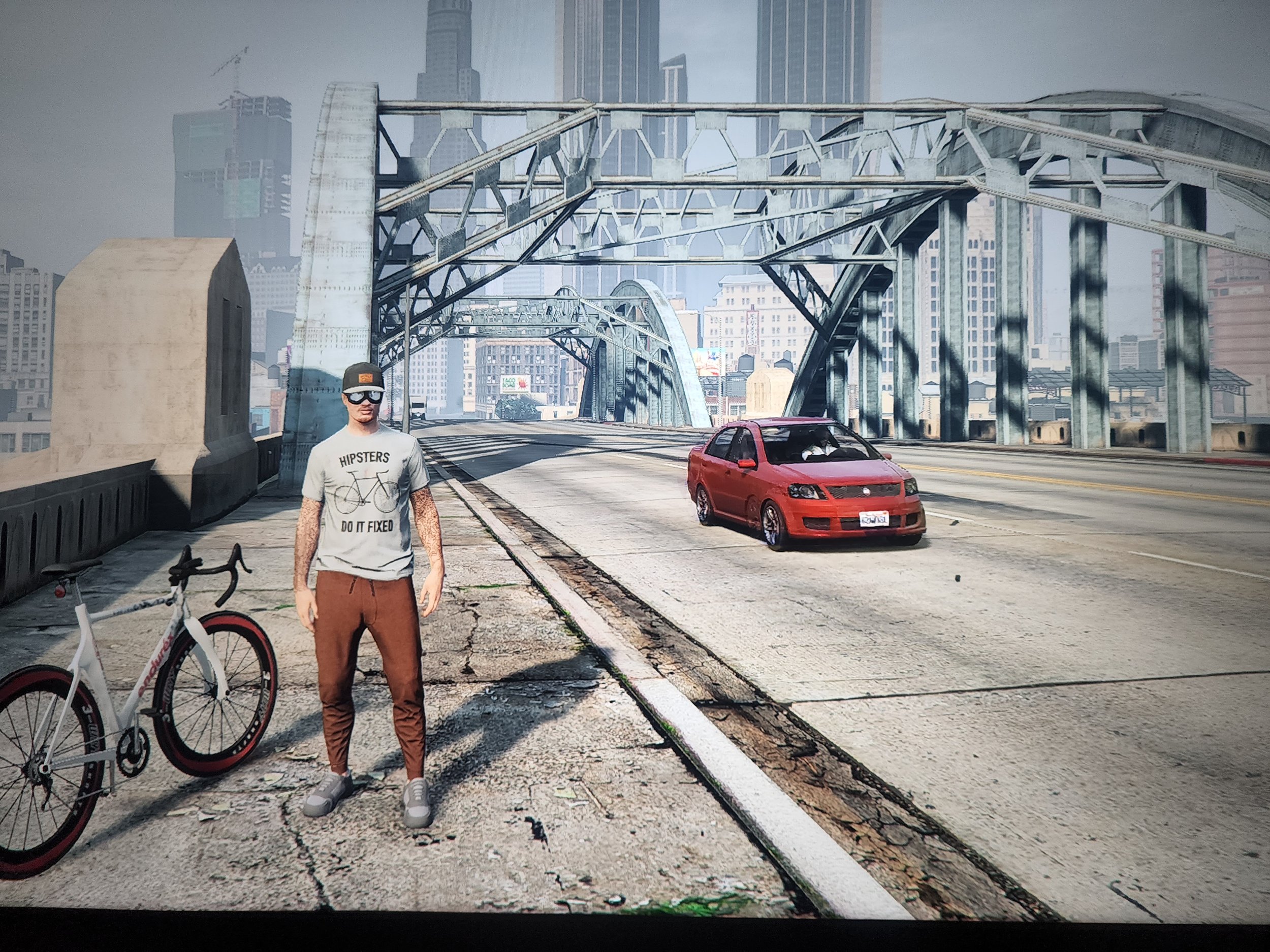City Scenes: Cycling L.A.'s new 6th Street Bridge (w/ video)
While I missed out on all the excitement surrounding the opening of L.A.’s new Sixth Street Viaduct back in July, I finally got to see the bridge in person during a visit to California this October. I also got to try out the city’s bike share system.
There is a Metro Bike station near the western end of the bridge at the intersection of Willow and Mateo streets. It was a typically bright and clear Monday morning, and traffic was light in this corner of the Arts District.
Traffic was light on the bridge, as well. It was almost hard to imagine the bridge crowded with revelers or subjected to “street takeovers” as it had been in the weeks following its opening. The structure’s broad, bright surface seemed to shimmer in the sunlight, and in a state of quiet that was only occasionally interrupted by passing vehicles.
Much of the discourse around the bridge’s opening this summer focused on the unruly appropriations of this new urban space and on how to maintain an uninterrupted traffic flow. I noted that the speed humps which had been touted as a quick-fix solution for stopping road racing on the bridge have not been installed.
Another strand of discourse placed blame for the unanticipated disruption not on the “unruly” bridge users but rather on the designers and planners whose ingrained transit biases and myopic mobility visions laid the foundation for an emergent repurposing of the infrastructure that was ultimately inevitable rather than unexpected. The L.A. Times editorial board barely stopped short of invoking the Lefebvrian “right to the city” in calling for a vision of public space oriented around people rather than vehicles. My own urbanist inclinations are entirely in agreement with this rhetoric. Having now seen the bridge in person, however, I have to say that I quite like the new Sixth Street Viaduct. The bridge may not represent anything revolutionary, nor does it offer a bold new vision for urban space, but for what it is I found it to be accessible enough for pedestrians and cyclists, while offering expansive views of the river and downtown skyline. Even the bike lanes, which the Times editorial derided for being insufficiently “protected” from traffic, offer a better sense of separation from the road relative to what I’ve seen in U.S. cities.
On the bridge’s aesthetic features my feelings are more ambivalent. The concrete surface conveys the sense that the bridge is merely an extension of L.A.’s sprawling freeway network, and the canted arches smack of the sort of cosmopolitan “starchitecture” that renders all spaces in a homogenizing image of sameness. I am also preferential to the original bridge design and was in favor of the early proposals that the replacement viaduct be designed as a replica of the former structure (the preservation of historic and landmark architecture is one of the issues that brings out my conservative side). Regardless, I enjoyed my brief time on the bridge. I also unconsciously recreated my GTA avatar’s 6th St Bridge photo from back in August:
Here’s some video I shot during my bridge crossings:
